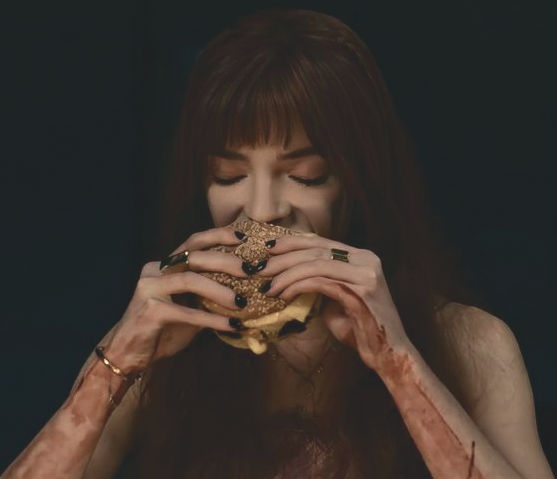Biting, poignant and funny, “The Menu” is a unique thriller that attempts to serve a full course meal of entertainment with a critique on elitist food culture. However, the movie bites off more than it can chew and leaves the audience hungry for more.
“The Menu” follows food enthusiast Tyler (Nicholas Hoult) and his cynical last-minute date Margot (Anya Taylor-Joy) as they visit the illustrious Hawthorne restaurant, headed by Chef Slowik (Ralph Finnes). Located on a remote island, the restaurant has highly coveted reservations that come at the price of $1,250 per diner. Joined by individuals such a pointed food critic, a failing actor, restaurant regulars and a group of finance bros, Margot enters the space unaware of what will happen in the next four hours of the meal. Surrounded by the pretentious group of diners, the couple experiences an interactive menu that gets progressively more targeted and critical towards the guests.
Viewers follow the guests as they receive dishes that barely classify as food, including creations like “The Island,” featuring a single oyster placed on a rock amongst greenery, and “Breadless Bread Plate,” a series of sauces unaccompanied by bread. While the rest of the diners soak up whatever absurd food is plated, Margot stands out by refusing to eat and critiquing Slowik’s choices. In the end, it is her aversion for Hawthorne’s cuisine that sets her fate apart from the other diners.
Despite being marketed as a thriller, the movie falls short. Even casting Finnes, best known for his role as Voldemort, the movie doesn’t feel sinister. In theory, “The Menu”pointedly criticizes fine dining culture in a chilling manner. However, in practice, the movie comes off as a pretentious jab at an even more pretentious subject. Mentions of mouthfeel abound, and the way that characters speak about food makes their dialogue inaccessible to some viewers. At the same time, the food they praise so highly is intended to make fun of the characters’ willingness to consume even the most absurd of creations. This idea of criticism seems to circle around itself with every additional dish, but never fully reaching a successful conclusion. With its predictable plot and aura of reproval, the film comes off as more of a satire. Either way, it builds up to a final moment that leaves the audience underwhelmed. After such a carefully constructed menu, the final dish is lackluster. Though the ending falls flat, the rest of the film is still an entertaining punch at the privileged that should be watched.
Although the movie aims to be a critique of fine dining culture as a whole, Hawthorne seems to pay homage to the restaurant Noma in particular. Noma is an iconic restaurant that aimed to be groundbreaking, saying it wanted to define a new generation of high-end dining by focusing on Nordic ingredients. The three Michelin star Nordic restaurant is known for its minimalist food design elements, unconventional dishes and focus on foraged foods — all themes reminiscent of the artsy cuisine at Hawthorne. However, on Jan. 9, the restaurant announced that it would be closing due to painstaking preparation schedules that are no longer sustainable. The release of “The Menu” in combination with the closure of Noma indicates a shift in culinary culture away from fine dining.
“The Menu”was nominated for Best Original Screenplay at both the Hollywood Critics Choice Awards on Feb. 24 and the Writers Guild of America Awards on March 5. Viewers can now stream the movie on HBO Max.

Leave a Reply